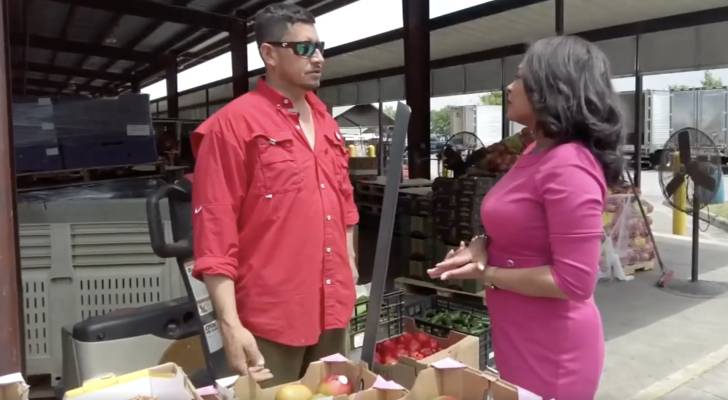
If you’ve noticed your grocery bill creeping up, especially in the produce aisle, you’re not alone.
Local produce vendors say prices on fruit and vegetable imports are spiking fast, and it’s all thanks to tariffs pushed by the Trump administration.
Don’t miss
- I’m 49 years old and have nothing saved for retirement — what should I do? Don’t panic. Here are 5 of the easiest ways you can catch up (and fast)
- Gain potential quarterly income through this $1B private real estate fund — even if you’re not a millionaire. Here’s how to get started with as little as $10
- You’re probably already overpaying for this 1 ‘must-have’ expense — and thanks to Trump’s tariffs, your monthly bill could soar even higher. Here’s how 2 minutes can protect your wallet right now
Luis Saldana imports fruits and vegetables from Mexico and sells them at the farmers market in Jacksonville, Florida. He told News 4Jax the difference is already hitting his bottom line and his customers’ wallets.
“We used to buy a mango for maybe a dollar,” Saldana said. “Right now it has to be $1.75 a piece because it is a good mango.”
According to Saldana, the tariffs — up to 25% on goods from Mexico — are forcing wholesalers to buy less. Where they used to be able to purchase 10 boxes of produce, they can only afford five boxes for the same price.
Vendors dealing with rising costs, shrinking profit margins
News 4 Jax checked several major grocery stores and couldn’t find a single mango still selling at last year’s price.
The price squeeze is being felt across the board, especially for popular Mexican imports like tomatoes, avocados, and peppers. Tomatoes face a 17.09% tariff — to take effect July 14.
“Everything that comes from Mexico,” Saldana said, “I have to increase the price for the customer.”
Read more: Want an extra $1,300,000 when you retire? Dave Ramsey says this 7-step plan ‘works every single time’ to kill debt, get rich in America — and that ‘anyone’ can do it
The administration says the tariffs will stay in place until illegal crossings and drug trafficking from Mexico are “fully stopped.”
For vendors like Saldana that means navigating rising costs and shrinking profit margins. It’s a squeeze that small and mid-sized businesses, already operating on thin margins, aren’t built to absorb.
There’s a glimmer of hope on the local level.
Mitch James, Assistant General Manager at Jacksonville’s Farmers Market, says local farms are helping shield consumers from the full brunt of inflation.
“We’ve got about five or six (growers) that come from west of Jacksonville, predominantly going out towards Live Oak, that bring in cabbage, greens, broccoli, peppers — all the above,” James said.
“That’s the good thing that keeps the fuel cost down, which keeps the wholesale and retail price down.”
That’s welcome news for families stretching every dollar to put food on the table. But with the growing season ahead and tariffs showing no signs of easing, one thing is clear: Your produce may keep getting pricier before things get better.
Raise prices or take the hit?
Vendors operating on razor-thin margins are now faced with a tough choice.
Do they hike prices and risk driving away budget-conscious customers? Or absorb the costs and watch their profits disappear?
For small business owners like Luis Saldana, that’s a lose-lose scenario. Analysts warn the tariffs could fuel inflation and limit variety in stores, making fresh produce even less accessible. And it’s not just the produce aisles feeling the pressure.
Smaller vendors, especially in Florida, could be pushed to the brink.
What to read next
- Millions of Americans now sit on a stunning $35 trillion in home equity — here’s 1 new way to invest in responsible US homeowners while targeting a 14%-17% IRR
- Robert Kiyosaki warns of a ‘Greater Depression’ coming to the US — with millions of Americans going poor. But he says these 2 ‘easy-money’ assets will bring in ‘great wealth’. How to get in now
- Here are 5 ‘must have’ items that Americans (almost) always overpay for — and very quickly regret. How many are hurting you?
This article provides information only and should not be construed as advice. It is provided without warranty of any kind.